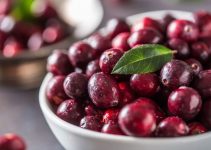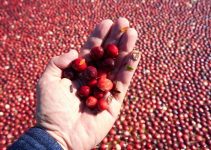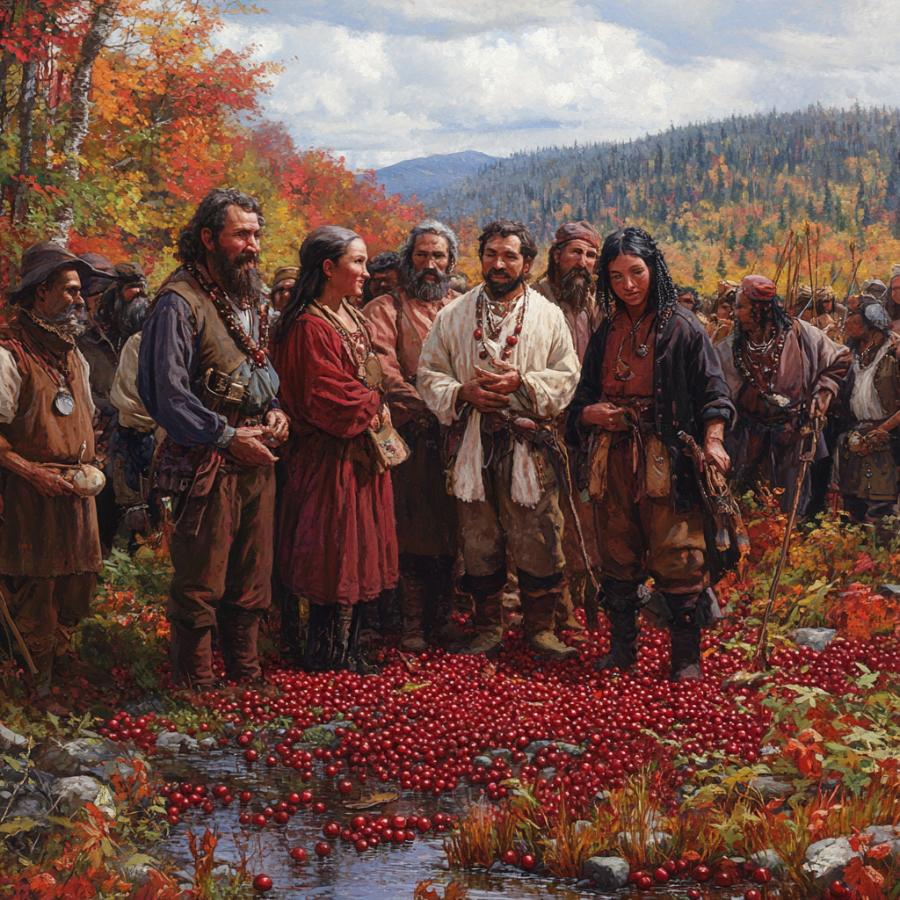
Cranberries used as Medicine
…
Cranberries as Medicine in Early America
Cranberries are small, red berries that grow on low bushes in wet, boggy areas. Today, many people know cranberries as a fruit we use in sauces, juices, and even desserts, especially around Thanksgiving. But long before modern times, cranberries had a much different purpose. In the 1600s and 1700s, they were more than just food-they were also used as medicine, particularly by Native Americans and early European settlers in North America.
Native Americans and Cranberries
Before European settlers arrived in North America, Native American tribes had already been using cranberries for centuries. Cranberries were native to North America, meaning they grew here naturally, and the Native Americans had learned how to make the most of this interesting berry.
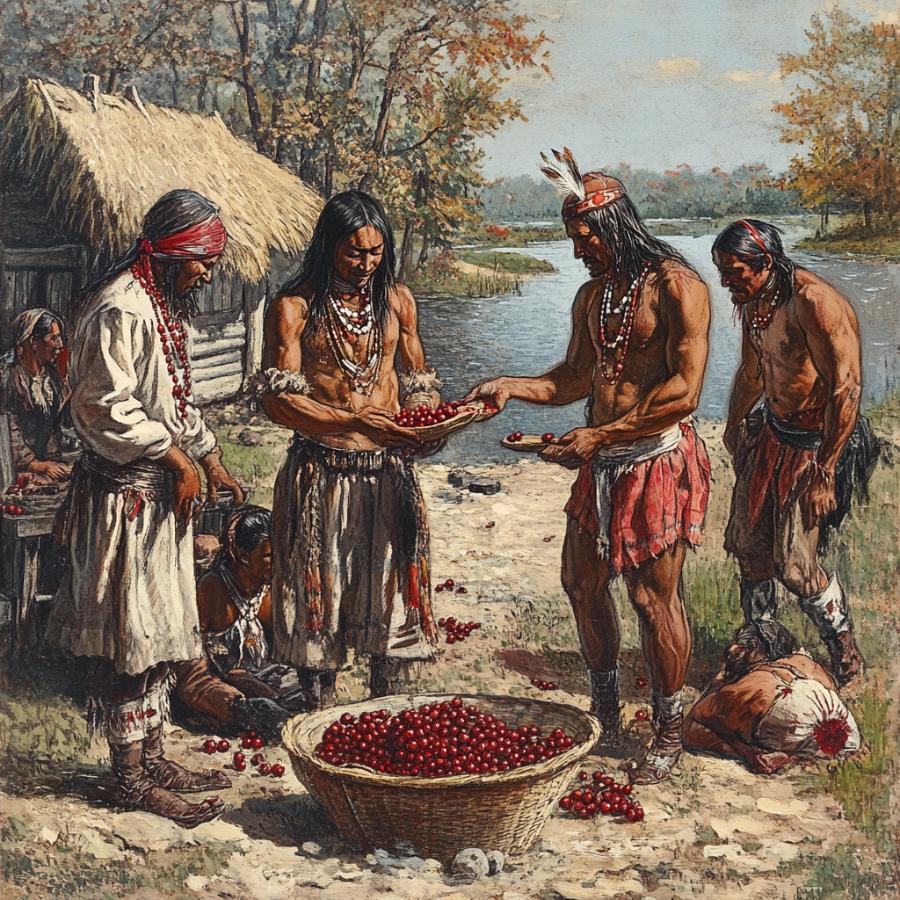
Native Americans using Cranberries as Medicine
GENERAL USES
Food: Of course, cranberries were a source of food. They could be eaten fresh, dried, or mixed with other ingredients.
Dye: Cranberries were also used to create dyes for clothing and other textiles. The bright red color of the berry made it perfect for this purpose.
Medicine: This is where cranberries became especially valuable. Native Americans believed cranberries could help treat various illnesses and wounds. They would crush the berries to make a paste that could be applied to cuts and infections to help them heal. The acidity in cranberries made them a natural disinfectant, meaning they could help kill harmful germs and bacteria.
One of the most important uses of cranberries was in a type of food called pemmican. Pemmican was made from dried meat, animal fat, and cranberries or other berries. It could be stored for long periods and was an important source of food during the winter months. But pemmican wasn’t just about nutrition-Native Americans believed that the cranberries in the mixture also helped to keep people healthy and ward off sickness.
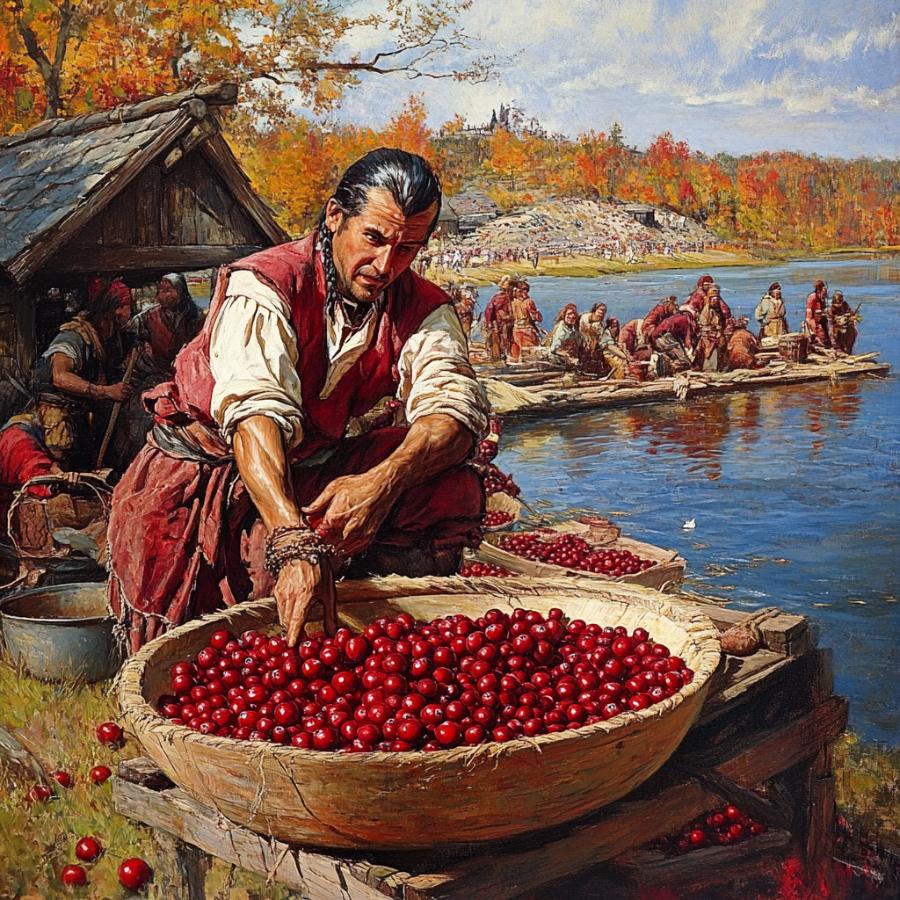
Early Settler taking advantage of the benefits of Cranberries
Cranberries & the Early Settlers
When European settlers began arriving in North America in the 1600s, they learned a great deal from the Native Americans about how to survive in the new land. One of the things they learned about was the cranberry.
The settlers, much like the Native Americans, quickly realized the cranberry’s medicinal value. They, too, began using the berries to treat different ailments. This was especially important because in the 1600s and 1700s, medicine wasn’t as advanced as it is today. Doctors didn’t have access to modern medications, antibiotics, or even vaccines, so people relied heavily on natural remedies like cranberries to treat sickness and injuries.
Medicinal Uses
Wound Healing: As we mentioned earlier, cranberries were often used to help treat wounds. If someone had a cut or sore, they would crush cranberries into a paste and apply it directly to the wound. The cranberry’s natural acidity helped to clean the wound and prevent infection. This was particularly important because, at that time, an infection could easily turn deadly.
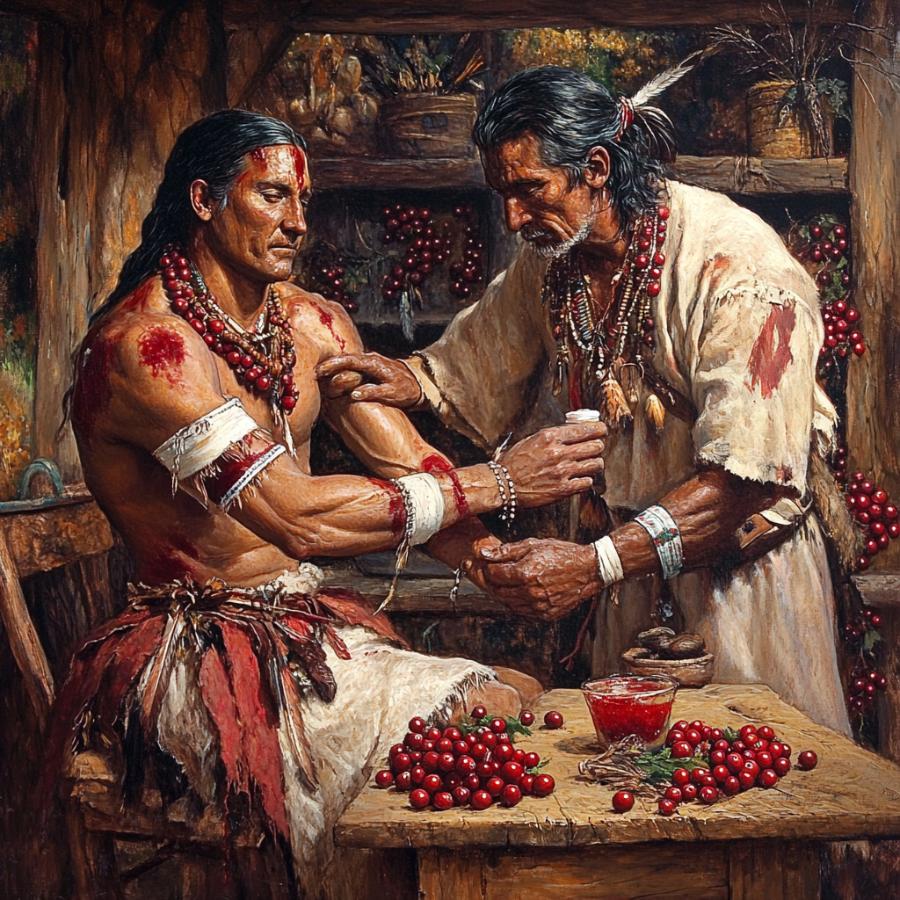
Cranberries used to Heal Wounds from the Hunt
Scurvy: One of the most significant health issues for sailors during the 1600s and 1700s was scurvy. Scurvy is a disease caused by a lack of vitamin C. Since sailors spent months at sea without fresh fruits or vegetables, they often developed this painful condition. However, cranberries are rich in vitamin C, and sailors who ate cranberries or drank cranberry juice were able to prevent or cure scurvy. Native Americans showed settlers how to use cranberries in this way, and it became a vital tool for sailors on long voyages.
Digestive Problems: Cranberries were also believed to help with digestive issues. Native Americans and settlers alike thought that cranberries could help settle an upset stomach or improve digestion.
Urinary Tract Infections: Today, many people still use cranberry juice to help with urinary tract infections (UTIs). Back in the 1600s and 1700s, people didn’t know about bacteria the way we do now, but they knew that cranberries seemed to help with these kinds of infections. We now know that cranberries contain compounds that prevent bacteria from sticking to the walls of the urinary tract, which is why they are effective against UTIs.
Fevers: Cranberries were also used as a treatment for fevers. People believed that the berry’s cooling properties could help bring down a fever and make a person feel better.
Cranberry Popularity & Trade
Because cranberries were so useful, they quickly became an important item in trade. Native Americans traded cranberries with European settlers in exchange for other goods, such as tools, fabric, and food. European traders even began sending cranberries back to Europe, where people appreciated their ability to prevent scurvy and other illnesses.
The cranberry trade became so important that cranberry farming eventually took off in North America, particularly in the New England region, where the berries thrived in the cold, wet conditions.

Cranberries were invaluable in treating scurvy
Cranberries Today
Today, cranberries are still valued for their health benefits. While we no longer rely on them for survival, as people did in the 1600s and 1700s, cranberries continue to be a popular home remedy. Research has shown that cranberries may help prevent urinary tract infections and support overall health.
Cranberry supplements, juices, and extracts are also gaining in popularity today, and many people use them as a natural way to boost their vitality and health. Although modern medicine has come a long way since the early days of North American history, cranberries remain an important symbol of the power of natural healing.
Summary
In the 1600s and 1700s, cranberries were much more than just a tasty fruit. They were a vital part of life for both Native Americans and European settlers in North America. Used as medicine, cranberries helped treat wounds, prevent infections, and even ward off deadly diseases like scurvy. These small berries played a big role in helping people survive and stay healthy in a time when modern medicine didn’t yet exist.
Even today, cranberries continue to be valued for their health benefits, showing us that sometimes, the natural remedies of the past are still just as important today.
– Cranby


